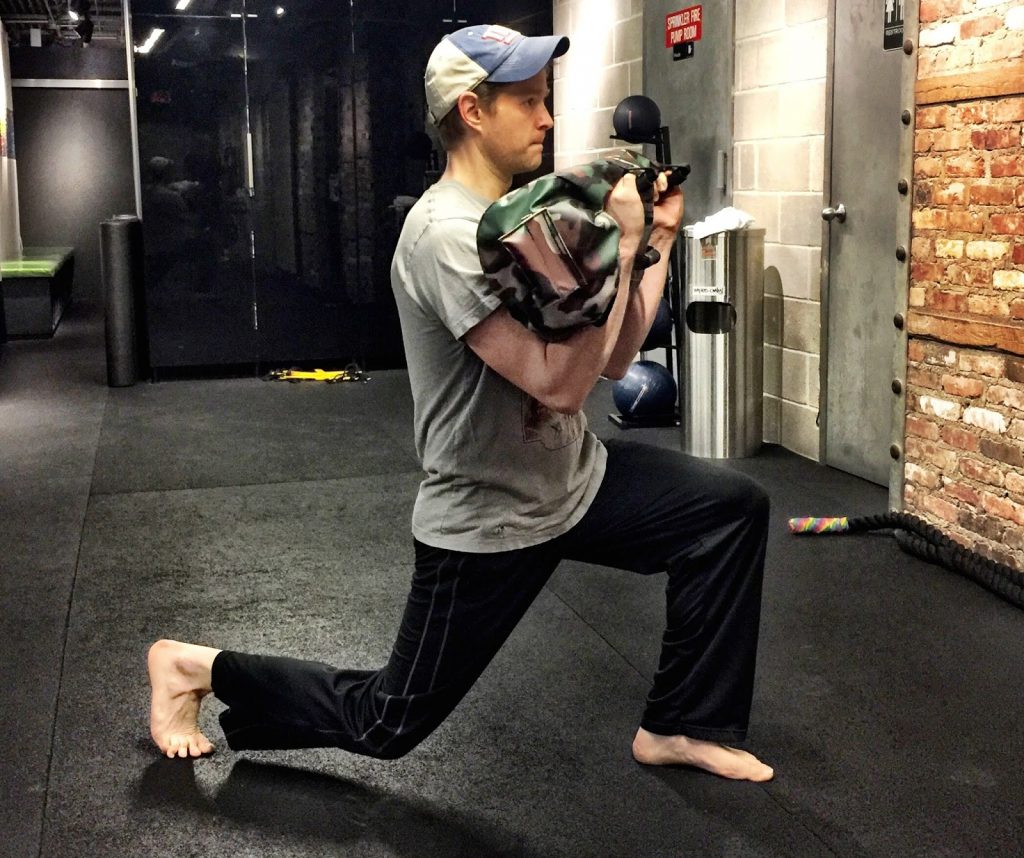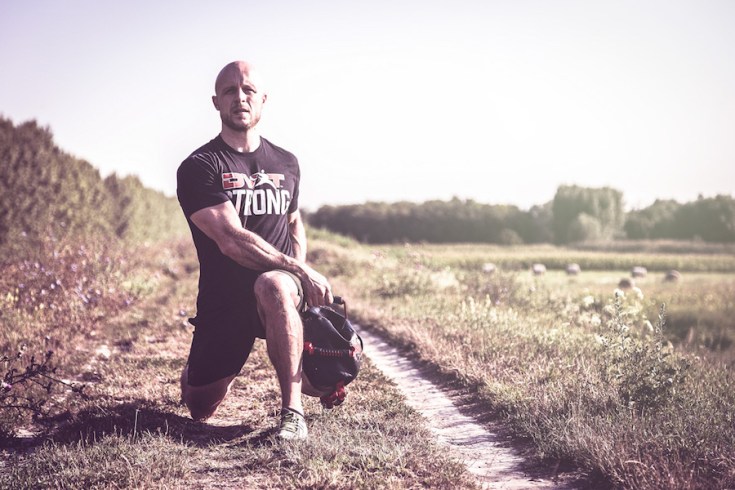The REAL Best Leg Exercises?
2018-08-13
Barbell back squats. Training the legs with anything else for me back in the day was ridiculous. Of course on leg day I would supplement my squats with leg extensions, leg curls, and some calf raises, all the good leg exercises right? However, the one thing I would avoid were lunges. It didn’t matter the what kind they were: forward, backward, or lateral … I didn’t do them! Those weren’t “manly” leg exercises anyways.
I hate to admit it, but I stayed away from lunges for my leg exercises for these three reasons:
- I couldn’t use as much weight as back squats
- They are difficult to do
- My knees didn’t feel good after lunging
I still remember being blown away how DVRT taught lunging. For the first time I came to realize that lunges were a two-legged exercise and this whole time I was only thinking about the front leg and never about the rear leg & foot.

I can also tell you the last thing I was worried about were my feet helping me rise up from the bottom of my lunges. And now I understand this is where my “knees feels” came from! There is this amazing concept from renown strength & conditioning coach, Mike Boyle, and FMS genius, Gray Cook, called the Joint-by-Joint Approach. It goes through how joints serve a purpose of either being a stable or mobile joint and it alternates up the body. Roughly, it looks like this:
- Foot = stable
- Ankle = mobile
- Knee = stable
- Hip = mobile
- Lumbar Region = stable
- Thoracic/Shoulders = mobile
- Shoulder Blades = stable
- Hand = stable
- Wrist = mobile
- Elbow = stable

You’re probably questioning my sanity right now and wondering what having a mobile or stable joint has to do with lunging (and you’re not the only one that questions my sanity) and leg exercises overall? Well, when you’re doing any exercise – especially lunging – if you’re feet aren’t plugged into the ground, then they’re not stable and this forces the ankles to try to make up for the lack of stability in the feet and then the knee wants to be mobile and up the chain it goes. This can great change how your perform and think about your leg exercises.
Lunging begins with the feet – both of them – and when there isn’t that stability in the feet there is unnecessary movement in the knees that will cause discomfort, achiness, and/or pain. When I took this new found knowledge to the gym and applied it to my lunges, they were stronger than ever! Even though I still couldn’t come close to my barbell back squat weight, I was OK with it. I experienced a massive total-body integration now with the DVRT lunges. Not only were my legs getting one helluva workout, but my core muscles – HOLY COW – I’ve never had my core light up like that doing squats with a bar on my back! A whole new way for me to look at my leg exercises and programs!
If I wasn’t all ready sold on lunging by now, this 1999 study I found from my alma mater, UW – La Crosse, sealed the deal! The study compared the EMG activity between back squats and lunges. And what I found to be amazing about the results was not just how the lunges produced more EMG activity than the squats, but that they were BODYWEIGHT lunges versus weighted squats! BOOM. DONE. SOLD.
 Please don’t get me wrong and think I’m anti-squatting. Heck no! I still love a good ol’ squat day, but the ability to challenge my body in more planes of motion and create that real world strength we strive for at DVRT is what keeps me putting lunges into my workouts (and my clients’ workouts, too)! It makes me reconsider how I was thinking about my leg exercises all these years! And the many combinations of lunges we can do, too, is crazy! Between changing the holding position and body position, it seems that there may not be an end to the possibilities of making your body movement strength savvy through DVRT lunges!
Please don’t get me wrong and think I’m anti-squatting. Heck no! I still love a good ol’ squat day, but the ability to challenge my body in more planes of motion and create that real world strength we strive for at DVRT is what keeps me putting lunges into my workouts (and my clients’ workouts, too)! It makes me reconsider how I was thinking about my leg exercises all these years! And the many combinations of lunges we can do, too, is crazy! Between changing the holding position and body position, it seems that there may not be an end to the possibilities of making your body movement strength savvy through DVRT lunges!
Don’t miss this and Cory’s other great ideas and programs in his Movement Strength training that you can receive 25% off with coupon code “summersale” HERE
© 2025 Ultimate Sandbag Training. Site by Jennifer Web Design.







